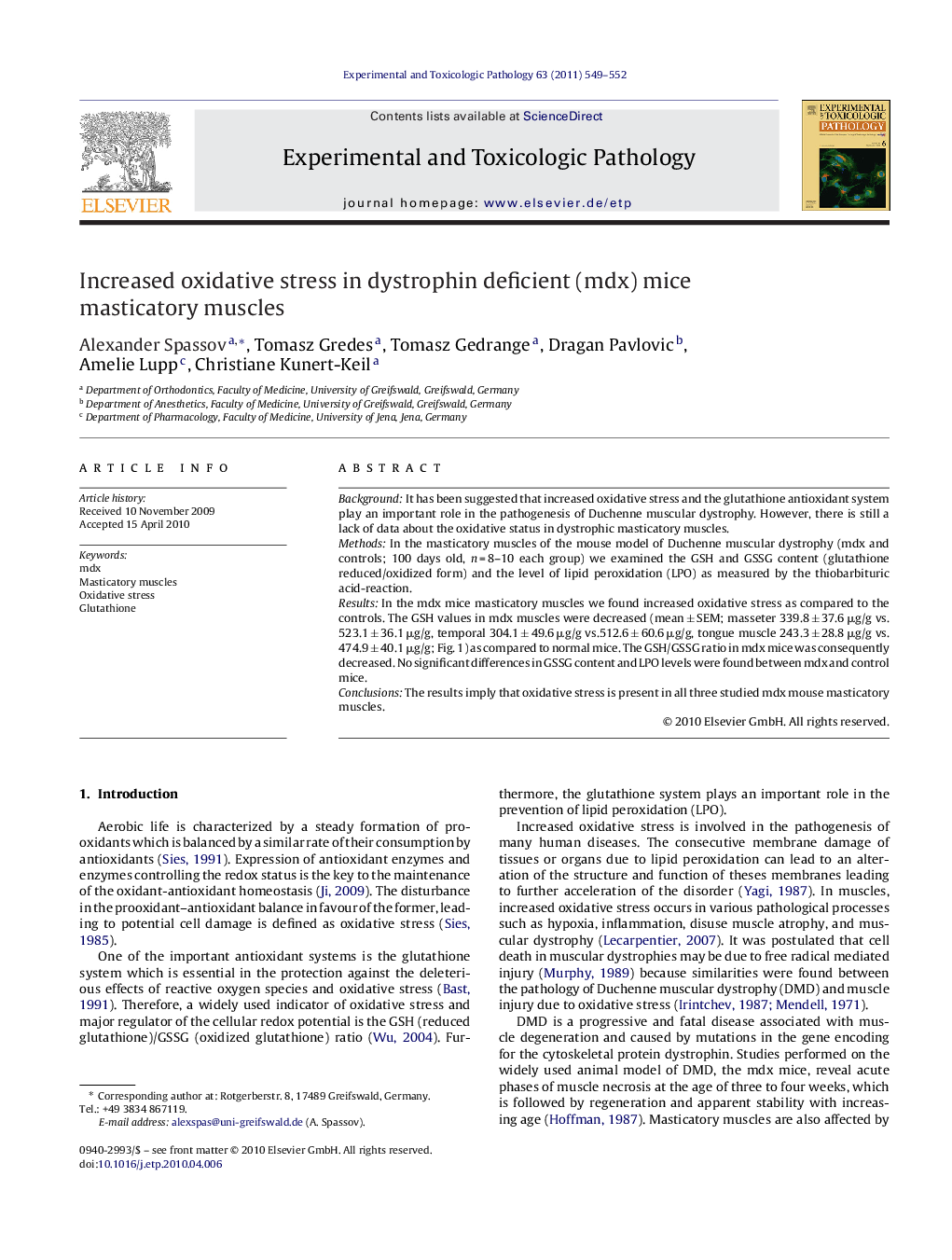| Article ID | Journal | Published Year | Pages | File Type |
|---|---|---|---|---|
| 2499029 | Experimental and Toxicologic Pathology | 2011 | 4 Pages |
BackgroundIt has been suggested that increased oxidative stress and the glutathione antioxidant system play an important role in the pathogenesis of Duchenne muscular dystrophy. However, there is still a lack of data about the oxidative status in dystrophic masticatory muscles.MethodsIn the masticatory muscles of the mouse model of Duchenne muscular dystrophy (mdx and controls; 100 days old, n = 8–10 each group) we examined the GSH and GSSG content (glutathione reduced/oxidized form) and the level of lipid peroxidation (LPO) as measured by the thiobarbituric acid-reaction.ResultsIn the mdx mice masticatory muscles we found increased oxidative stress as compared to the controls. The GSH values in mdx muscles were decreased (mean ± SEM; masseter 339.8 ± 37.6 μg/g vs. 523.1 ± 36.1 μg/g, temporal 304.1 ± 49.6 μg/g vs.512.6 ± 60.6 μg/g, tongue muscle 243.3 ± 28.8 μg/g vs. 474.9 ± 40.1 μg/g; Fig. 1) as compared to normal mice. The GSH/GSSG ratio in mdx mice was consequently decreased. No significant differences in GSSG content and LPO levels were found between mdx and control mice.ConclusionsThe results imply that oxidative stress is present in all three studied mdx mouse masticatory muscles.
